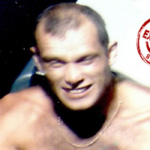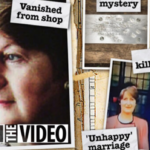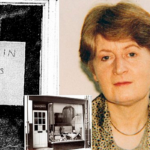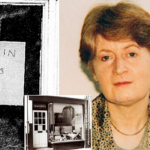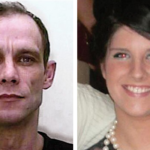Christopher Halliwell and Peter Sutcliffe Compared
by TIM HICKS & CHRIS CLARK
~~~~~
Introduction
Tim Hicks is a freelance journalist who covers crime for the NYE.
Chris Clark is a retired Police Intelligence Officer with twenty eight years’ service. In retirement he has pursued his interest in unsolved cases. He has co-authored a book “The Face of Evil”. The true story of serial killer Robert Black.
The NYE Christopher Halliwell Series:
- The breaking of Detective Superintendent Stephen Fulcher – by Tim Hicks
- Book review: “Catching a serial killer” by Stephen Fulcher – by Tim Hicks
- Christopher Halliwell and Peter Sutcliffe compared – by Chris Clark & Tim Hicks.
- Christopher Halliwell: How many victims? – by Chris Clark & Tim Hicks
- Christopher Halliwell: The Secret Murders – by Chris Clark & Tim Hicks. Parts 1 – 4
- Is Halliwell the “East Lancs Ripper”?
- Christopher Halliwell: The Later Cases
- Outside Justice: Did Halliwell murder Linda Razzell?
- Christopher Halliwell: Did he murder Claudia?
In this Part 3 of the series, Tim and Chris compare Halliwell with the “Yorkshire Ripper”, Peter Sutcliffe, and consider the possibility that Halliwell committed far more murders than the two for which he has been convicted.
Did Halliwell commit more than two murders?
The book “Catching a Serial Killer” starts with a dedication: “To Sian and Becky and the girls who haven’t been found”. This is the part of the book that is the most concerning.
As well as securing a confession to the murder of Miss Sian O’Callaghan and the location of her body, Detective Superintendent Fulcher’s controversial interview with Halliwell also revealed the existence of a second body. This ultimately ensured that Halliwell would get a full life term.
As the arrest and interview process with Halliwell proceeded, Fulcher became convinced that Halliwell had killed more than two women. This belief became more and more certain as the enquiry proceeded. This deduction by a highly experienced career detective was based on:
- When asked the date that he had killed his second victim, (Miss Becky Godden-Edwards), Halliwell stated “2003, 4 or 5”, indicating that he was confused and couldn’t distinguish between the dates of other murders he had committed.
- Halliwell could not remember the year of her murder, but took Fulcher to the exact place he had buried Miss Godden Edwards.
- Halliwelll stated to Fulcher “I know you’re not a psychiatrist, but what the ****’s wrong with me? Normal people don’t go around killing each other.” Indicating that he had killed more than two people.
- Fulcher then asked him “Only these two?” and Halliwell responded “Isn’t that enough?”, not “Yes”. Confirming to Fulcher that Halliwell did not deny killing more than two people.
- Halliwell indicated that he killed Miss O’Callaghan with a single knife blow to the back of the head, then levering upwards, to split the skull. It was a brutal act executed ruthlessly, quickly and without emotion, or remorse. It appeared to Fulcher he was practiced in this brutal act. Far more so than if it was the first occasion he had used it.
- Halliwell stated to Fulcher that he had spent all night digging a five foot grave for Miss Godden-Edwards, but in fact her grave was only eight inches deep. Indicating that Halliwell had confused Miss Godden-Edwards grave with another grave he had dug.
- Halliwell did not state that the body had been decapitated. Again indicating that he was confused with another grave site.
- As a former ground worker, Halliwell could dig a grave quite quickly. A carefully concealed burial site would be the perfect disposal place for a body, which would remove all the evidence it contained. Halliwell made a chilling comment to a colleague a few days before his arrest “”Who knows what or who you will find buried out there? There could be loads of people over the years.”
- Halliwell tried to strike a deal with police that if he cleared up Godden’s murder police would never interview him about anything ever again. The implication being there were other murders he did not want to face trial for. Video of this conversation here.
- A criminal psychologist concluded that Halliwell obtained sexual gratification from killing women. Sex being the basic urge of man, it is unlikely that he was able to satisfy this overwhelming urge by only committing two murders over eight years.
- Several Swindon prostitutes stated he was a regular user of their services, that he had become aggressive on multiple occasions and was obsessive about some of them.
- A pair of knickers was recovered from Halliwell’s garage which did not belong to his partner or his daughters. This took on added significance later in the investigation.
- In May 2014 Wiltshire Police found a cache of property in and around an eight foot deep pond in woodland in Ramsbury, Wiltshire. It comprised a shotgun and sixty items of women’s clothing including a pair of boots that belonged to Miss O’Callaghan and a cardigan that belonged to Miss Godden-Edwards. It is suspected that this may be a “trophy store” and a place Halliwell visited to obtain sexual gratification from the knowledge of the items concealed there.
It is not just Fulcher and the authors that are convinced Halliwell has many more victims than the two he has been convicted of murdering. Quoted in the Daily Mail, Detective Superintendent Sean Memory, who took over the Halliwell investigation from Fulcher said:
“I am also very, very clear there must be other victims out there, whether they are sexual offences or other women that he has taken,” “I can’t believe that was his first offence, from being a burglar in the 1980s to a murderer in 2003. There was a significant gap in his offending behaviour. On top of that, Sian wasn’t murdered until 2011 so what happened in the interim eight years? He talked candidly in 1985 about wanting to be a serial killer and I genuinely believe that’s a distinct possibility.”
At this point we need to examine the life of Christopher John Halliwell. The authors believe the following text is the most accurate and detailed chronology of Christopher Halliwell available to the public, other than that contained in Fulcher’s book “Catching a Serial Killer”.

Book review here
Christopher John Halliwell’s Childhood. The making of a serial killer
Christopher John Halliwell was born in 1964, in Swindon. He and his sister Sarah (born 1965) moved to Galloway Scotland after their Mother left their Father for another man.
Halliwell was brought up by his Mother and Step-father. He had a dysfunctional childhood which left him cold an emotionless. He was often subjected to severe beatings with a leather strap, but showed little reaction at the time. His mother (now dead) is also alleged to have stuck “drawing pins in his head and to have rubbed his face in food as punishment; his mother also used to press a hot iron on his hand and smile at him as he screamed”.
Sarah Halliwell said her brother had a dark side and displayed a ‘disturbing’ aura. ‘He was just not a normal child. I have witnessed things he did at first hand, and it was very unpleasant,’ she said in an interview in 2011. ‘He loved trapping spiders and butterflies and taking his time to pull off their legs and wings one by one. It was like a hobby to him and he showed no emotion while he was doing it. He has always lived in a strange world of his own.’ Miss Halliwell, who had not spoken to her brother for more than two years, said he had chilling blue eyes. ‘He is a very cold, detached person who could never handle normal relationships,’ she said. ‘If you ever had a go at him he would just stare you out with those vile eyes and say nothing.’
Sarah said Halliwell was “an evil, manipulative bastard”, who would “believe he had won after getting away with Becky’s murder’ She added: ‘He’s done at least two murders and probably many more. He’s playing games with the law and the families of the victims. He should be strung up or shot. He will always be dangerous because he is a completely cold fish. He doesn’t relate to people or care about them at all. I never want to see him or hear his name again. As a mum myself its Sian’s parents I’m thinking of.’
Halliwell spent his teenage years in Dalbeattie, in the late 1970’s and early 1980’s, going to the local High School before working for a few months in Carson’s butchers.
Classmates and work colleagues remembered a ‘quiet, strange boy’. A former schoolmate of Halliwell’s added: ‘We remember a quiet, thin and rather strange boy. The family came here for a few years and then left just as suddenly. It’s all a bit odd when you look back. Chris was certainly a very strange individual. Workmate Norman Neilson said: ‘This quiet, thin young boy arrived one day. He was about sixteen. He did the sweeping up and cleaning as well as very basic butchering tasks, such as paring bones and helping make pies and sausages. [He learned to use knives, handle carcasses and dismember them]. A few months later, his mum came into the shop looking for him and telling us she had to take him to the bank to apologise. She said he’d been filling in imaginary sums of cash in his passbook then trying to withdraw the amounts.’
When he was age 15, his Mother placed him into Foster Care. He showed virtually no emotion when handed over, simply telling her how much he hated her and how he would get her back for what she had done.
One cannot help but feel sorry for Halliwell for having such an awful childhood. It is hardly surprising he went on to become a very dangerous man.
Christopher John Halliwell: Adult life and serial killing career
After leaving school he moved to the West Country. He became a car thief and gained various jobs including working as a chauffeur which gave him the opportunity to study the layout of upmarket country houses which he returned to burgle.
He was sentenced to four years in prison for burglary and with remission, served less than three in HM Prison (HMP) Dartmoor. During 1985 Halliwell had a chilling and very significant conversation with cellmate former armed robber Ernest Springer. According to the Daily Mail Springer, said ‘He told me that he had been having sex with a woman and she asked him to strangle her, not to kill her, but for a thrill. He said: “So I did. I strangled her so she would not be having sex with anyone else.” I asked him a few days later if he’d actually killed her, but he got very aggressive. He was rolling a fag and knocked his tobacco tin off the table, saying: “I don’t want to talk about it.” This may be a reference to Halliwell’s first victim and if so, confirms the author’s belief that he had started killing prior to imprisonment in 1985. Springer said:
‘He used to ask me about killing. He said, ‘How many people do you need to kill before you become a serial killer?’ ‘He just had a thing about them. He wanted people to be proud of him or an area to be afraid of him. Don’t ask me why, but that’s what he wanted to be. He used to get this magazine called True Detective with stories about people getting knocked off. His favourite book was about the Moors Murders with a picture of Myra Hindley on the front.’
Had he already killed by then? He was twenty-two. It is rare for men to begin to kill in their late 30s. Most serial killers start in their late teens and early twenties.
Halliwell was released from HMP Dartmoor in 1987 aged twenty-three. He returned to Swindon and met Lisa Byrne that year when she was sixteen. They married in July 1991 and had two daughters and a son together. They lived in the Broad Green area of Swindon with their children. Neighbours recalled a strained marriage. Said one former neighbour:
“They were living together but they weren’t getting on well,. There were problems between husband and wife, then they moved away from here and then after they moved away from here they got divorced.”
Lisa and Halliwell split in 2005 when Halliwell moved in with a neighbour a few doors down, who became his partner.
He lived at a string of addresses in Swindon and worked in dozens of jobs, from window cleaner to builder, ground worker, chauffeur and taxi-driver. He also worked as a binman.
He lived in many places across the UK, including the Liverpool area, Northampton, Huddersfield and York, giving him a good knowledge of many Northern cities and the area around them. He became a taxi driver in Swindon and then ran his own chauffeur business; in January 2010 he was declared bankrupt and returned to private hire cabs. As a night-time driver, Halliwell got to know the red light district of Swindon well, often ferrying sex workers and drug dealers around. He was also familiar with the countryside around the town. He was a keen angler and enjoyed narrow boat holidays and fishing trips.
He continued having one-night stands and using prostitutes, particularly after his wife had their third child in 1996. He later told police:
“After Lisa had Shane in 1996 she went completely off sex, I didn’t and I’m not going to say I was out there every single night trying to get it. I didn’t want an affair, I didn’t want a relationship. Occasionally, I would use a call girl. They work in a certain area around Swindon. There’s no emotional involvement. Obviously, with an affair there’s a danger you get too emotionally involved and it would ruin your marriage. It was a sensible escape rather than getting into an affair.”
Halliwell was also a serial complainer to the police and other authorities. Between 2000 and 2010 he made numerous reports about perceived slights and wrongs against him.
In common with many violent sexual offenders, Halliwell had a fascination with hard-core pornography, including child abuse and bestiality. Computer search terms he used showed he had an interest in murder, violent sex and rape. He also had an interest in bondage and knots. He is known to have been worried that police were investigating him over allegations involving girls, although there was no such inquiry. Was this a consequence of offending by Halliwell that has gone undetected?
Peter Sutcliffe
For those that are unfamiliar with the case, the Yorkshire Ripper investigation in 1975 – 1981, was up to that time the biggest police investigation ever undertaken in Britain. Peter Sutcliffe -a married lorry driver from Bradford- was convicted of murdering thirteen women and attempting to murder another seven between 1975 and 1980. He confessed to another two attempted murders and it has been stated in the press that West Yorkshire Police (WYP) are confident they have enough evidence to send a file to the CPS on another two, but have decided not to proceed to prosecution. There is a very good documentary on Sutcliffe here.

Some of Peter Sutcliffe’s victims. How many more are there?
Chris and Tim first worked together on a similar assignment to identify the undetected offences committed by Peter Sutcliffe. Their investigation into the actual number of murders Sutcliffe committed is below:
Their investigations into a murder and an attempted murder committed in North Yorkshire which we believe were committed by Sutcliffe are below:
The authors believe that like Sutcliffe, Halliwell was involved in two North Yorkshire cases, which will be covered in forthcoming articles.
Peter Sutcliffe and Christopher Halliwell compared
The authors were shocked at the number of similarities there were between Sutcliffe and Halliwell, personally; in their modus operandi; in the way they were detected and in the police response.
Personal life
Both Sutcliffe and Halliwell:
- Had been involved in crime in their early years and had extensive criminal records.
- Outwardly appeared to be respectable and in stable relationships, hardworking and in employment.
- Used prostitutes.
- In common with serial killers such as Levi Bellfield and Robert Black, they had respectable employment of a transitory nature.
- Were geographically mobile serial offenders. Sutcliffe was a lorry driver and Halliwell was a taxi driver and chauffer. They both drove all over the country. The irregular hours and lack of supervision allowed them to plan their offending, travel freely and fit work in around jobs that gave them the opportunity to abduct and murder. Halliwell also worked as a construction worker, again travelling all over the country.
- Were able to contain their emotions about the criminal part of their lives, separate it from their family and work life and to deceive their wives and friends. The only exception to this was when Halliwell was very skilfully questioned by Detective Superintendent Stephen Fulcher after Halliwell’s arrest for the abduction of Miss Sian O’Callaghan. He confessed to her murder and that of Miss Becky Godden-Edwards and led him to their bodies, in a moment of emotional contrition.
- Were interested in cars and changed them regularly.
- Were physically fit and easily able to overpower a woman. Please note Halliwell’s lean strong physique in the lead illustration.
Modus Operandi
Both Sutcliffe and Halliwell:
- Re-visited the bodies of their victims.
- Enticed victims into their vehicles.
- Were Necrophiliacs
- Attacked prostitutes because they were easy to entice into vehicles. The authors believe they attacked hitch-hikers for the same reason.
- Were geographically aware. Sutcliffe had a collection of A – Z Maps of cities and had an encyclopaedic knowledge of routes. Halliwell knew Swindon and the surrounding counties very well. He had lived in several cities, giving him a very wide knowledge of them and the wider area around them. Halliwell’s hobby of narrow boating and fishing gave him an encyclopaedic knowledge of canals, waterways, rivers, lakes and ponds, built up over many years.
- Drove all over the country crossing police force boundaries and operated in a much wider geographic area than WYP and Wiltshire police realised. This further confused the investigations into them, possibly as a deliberate tactic. Sutcliffe certainly varied his areas of operation to evade police surveillance of his usual haunts.
- Halliwell and Sutcliffe were both forensically aware. A few examples:
- Sutcliffe deliberately changed his modus operandi to confuse the investigation and never left anything behind such as a murder weapon. Halliwell removed fibres and bloodstains he feared would connect him to Miss O’Callaghan’s death. Halliwell was found to own a book on forensic science and was believed to have studied it.
- Sutcliffe returned to the body of Jean Jordan, to try and recover evidence and on at least one occasion left decoy evidence to mislead the investigation. Halliwell admitted returning regularly to Miss Godden-Edwards grave site, probably to obtain sexual gratification and to check it was still well hidden. He may have done this with other grave sites, hence the reason they were not discovered. It was alleged in court by a forensic archaeologist that Halliwell had returned to the grave after burial to dismember the body. He returned to Miss O’Callaghan’s body four times and moved the body, to ensure it escaped a police search. This shows how focussed he was on destroying/removing forensic evidence.
- As part of the effort to confuse any investigation, both men changed cars regularly, (Halliwell had about 80 different vehicles). Halliwell was also surveillance aware. Despite being under surveillance by a skilled surveillance team with twelve cars, he was able to detect that he was under surveillance.
- Both killers varied their methods of killing. Sutcliffe used a hammer, stabbing, and/or a ligature. Halliwell beat, stabbed or strangled his victims. Again confusing any investigation that was considering whether to link the murders.
- Halliwell removed clothing and identifiable jewellery from Miss Godden-Edwards after transporting her some distance from the scene of her murder to bury her. He also dumped seat covers and floor mats from his car, and burned evidence after abducting Sian O’Callaghan. He chose rural locations to bury his victims, which are generally not so well covered by CCTV or passers-by.
- Sutcliffe concealed some of his victims’ bodies. Halliwell concealed all of them. He was also topographically aware. Miss Godden-Edwards grave site was carefully and skilfully chosen for concealment, with a practised eye for the ground. “The stony ground gave the field zero agricultural value: no farmer could grow crops here. If you planted a body in a ploughed field, the following spring you’d have the owner on the ‘phone alerting the police” (Fulcher). The site had probably been pre-selected with great care, for concealment, easy access and easy digging ready for his next victim.
Detection
Both men were caught because they deviated from their normal modus operandi.
In Sutcliffe’s case, this was because he used false number plates on his car, raising suspicions and giving the police a reason to arrest him for car theft, when he was picked up in a routine stop.
In Halliwell’s case, it was because he mistook Miss Sian O’Callaghan for a prostitute and abducted her at a place covered by CCTV. This meant that she was reported as a missing person that day, resulting in Detective Superintendent Fulcher being called out. Fulcher immediately understood the gravity of the situation and launched a Category A Enquiry that day. Had Miss O’Callaghan been a prostitute leading an itinerant life and shunning the police, she may not even have been reported missing, the police would not have known or reviewed the CCTV footage and Halliwell would have escaped to kill again.
Dissimilarities
There are, however, two enormous dissimilarities between Halliwell and Sutcliffe:
- Sutcliffe was convicted of thirteen murders and seven attempted murders, a 35% failure rate in his attacks. But no one has come forward and said they were attacked by Halliwell and escaped. On this basis, it appears that Halliwell was a very much more effective, practiced, well-organised and ruthless killer than Sutcliffe. This meant there were no witnesses left behind to give evidence against him – further confirming that he was forensically aware. But also good reason to believe he was capable of killing for many years without detection and he has more as-yet-undetected victims.
- In the case of Peter Sutcliffe, no year passed without him committing a murder or attempted murder from 1966 until his arrest in 1981. In the case of Christopher Halliwell, Chris has been unable to identify any murders that could be attributable to him in 1987, 1989, 1990, 1992, 1999, 2000, 2007, 2008, or 2010, indicating that Halliwell has many more unsolved and unknown crimes.
The Police investigation
The similarities of the police investigations into Halliwell and Sutcliffe will be covered in the next article in the series, in which the authors reveal a list of murders for which they believe Halliwell should be considered as a suspect.








